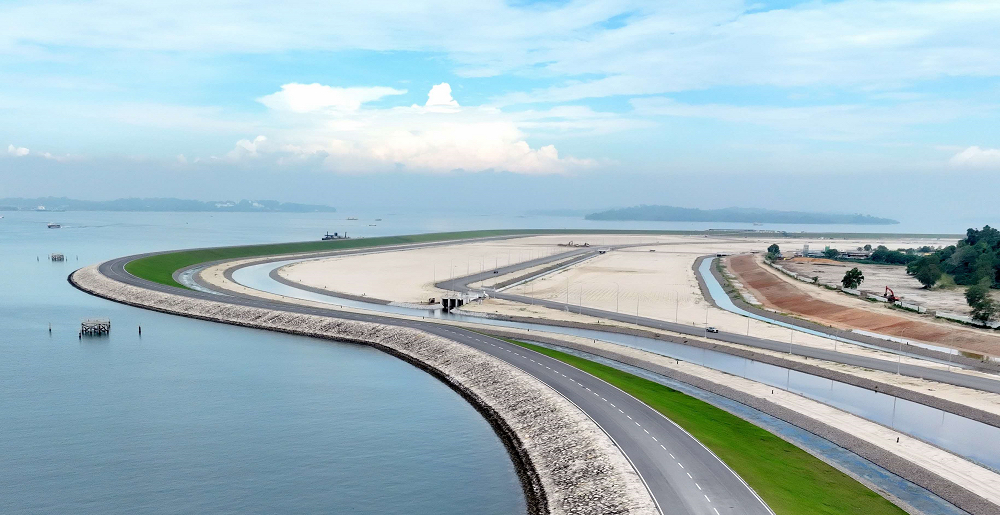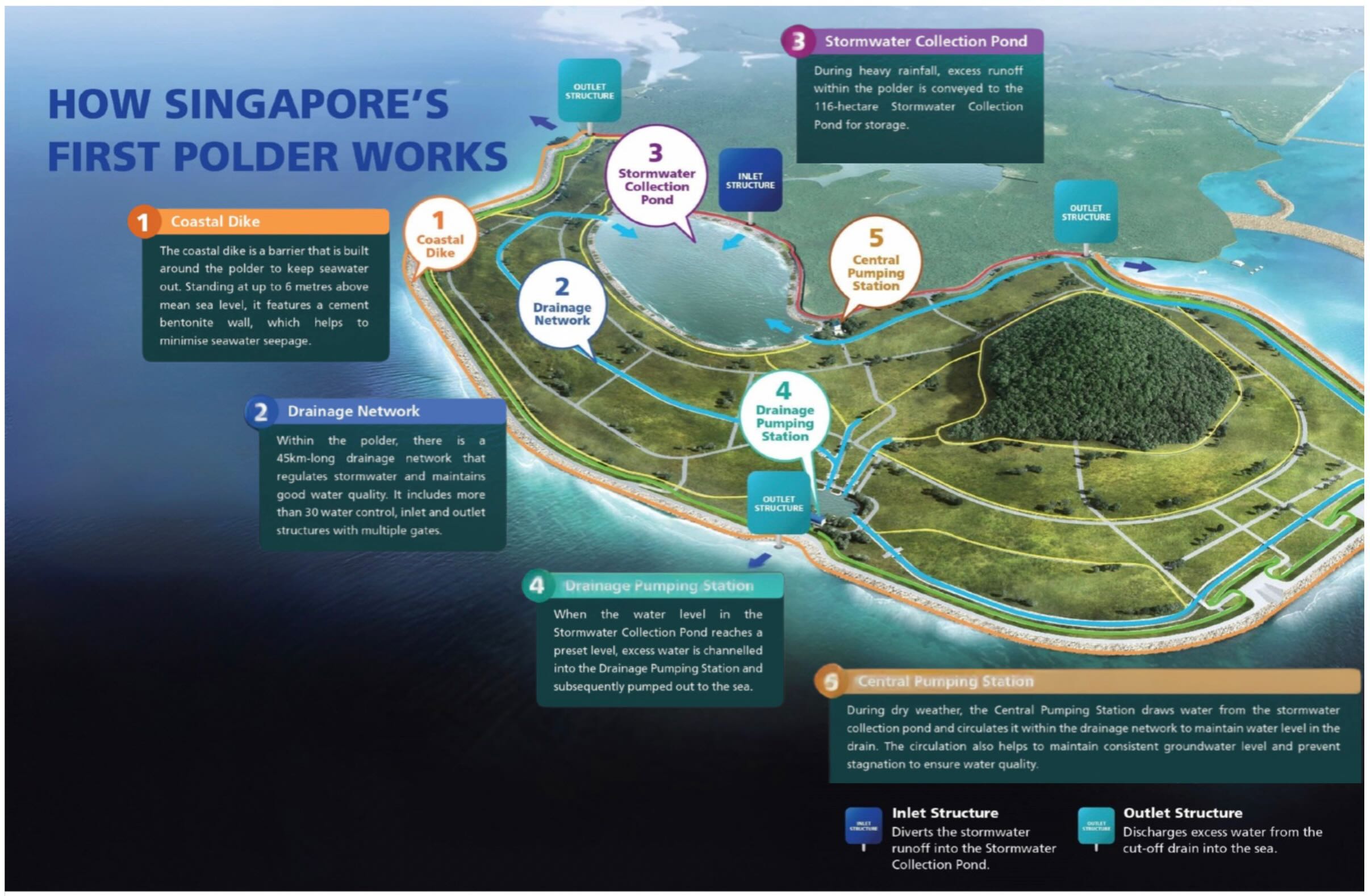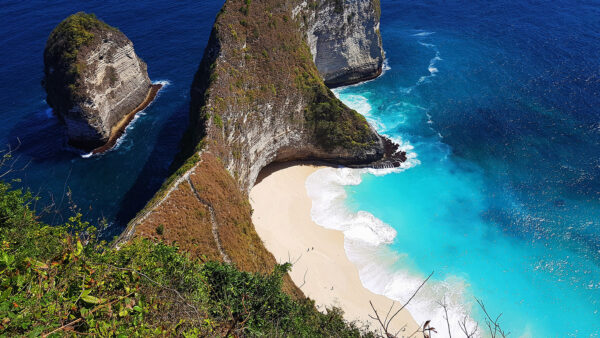
Singapore has added 800 hectares – 8 sq km – of dry, below-sea-level land to its constrained footprint with its first “polder” at the northwestern tip of Pulau Tekong.
With the sea kept at bay by dikes, a technique mastered in the Netherlands, the area will be used for military training, freeing up mainland space for new homes and public amenities.
It’s Singapore’s first use of the empoldering method, which creates dry land below sea level by enclosing an area with a dike and keeping it dry with pumps and drainage systems.
The approach uses up to 50% less sand than traditional reclamation methods, reducing both the cost and environmental impact of land reclamation.
At the heart of the polder is a 10km coastal dike with foundations set 1.2 metres below mean sea level.
It rises as high as six metres above sea level, and can be raised in the future to counter rising seas.

A road built along its crest allows for maintenance and access across the site, complemented by another 21km of internal roads.
Keep bailing
Given the site’s low elevation and Singapore’s heavy rainfall, an advanced water management system has been developed to prevent flooding.
This includes a 116-hectare stormwater collection pond able to hold up to five million cubic metres of water – equivalent to 2,000 Olympic-sized swimming pools – along with two pumping stations and a 45km drainage network with over 30 water control structures.
During wet weather, excess rainwater is directed to the stormwater pond and later pumped into the sea once it reaches a set threshold. In dry periods, water is recirculated to prevent stagnation and maintain quality.
To design and implement the project safely, Singapore’s Housing and Development Board and the Public Utilities Board drew on expertise from the Netherlands — still a global leader in dike and polder engineering.
Officials say the project reflects Singapore’s commitment to innovation and sustainability in its long-term land reclamation and coastal protection strategies, especially as the nation prepares for the impacts of climate change and rising sea levels.
- Subscribe here to get stories about construction around the world in your inbox three times a week





